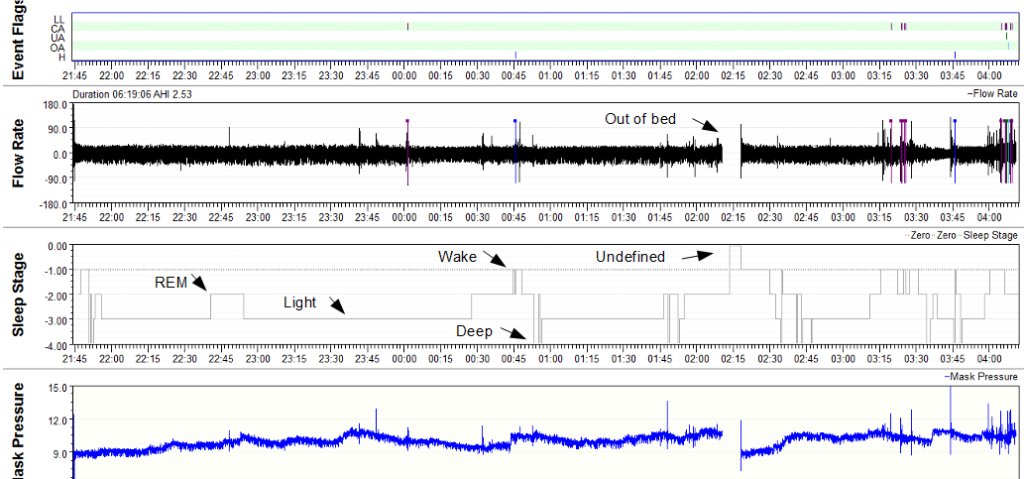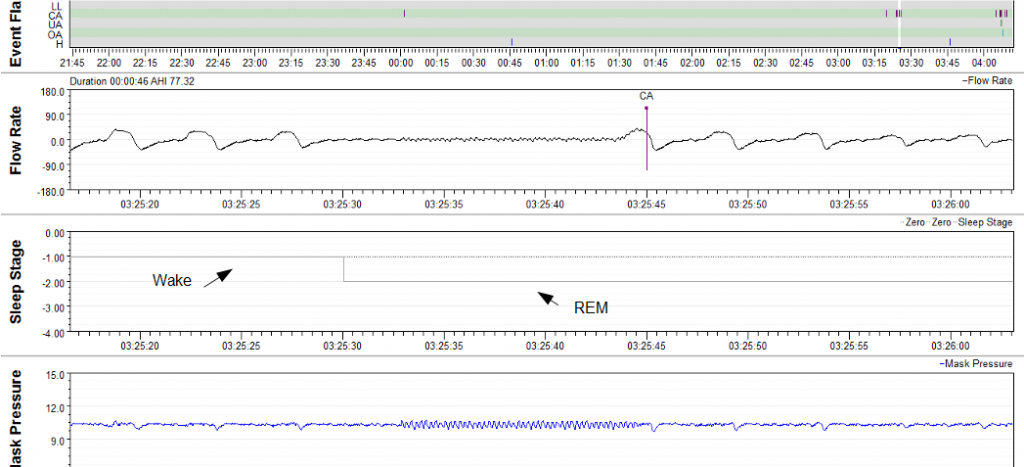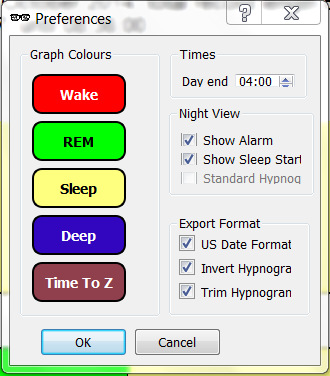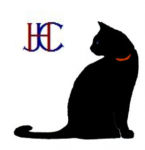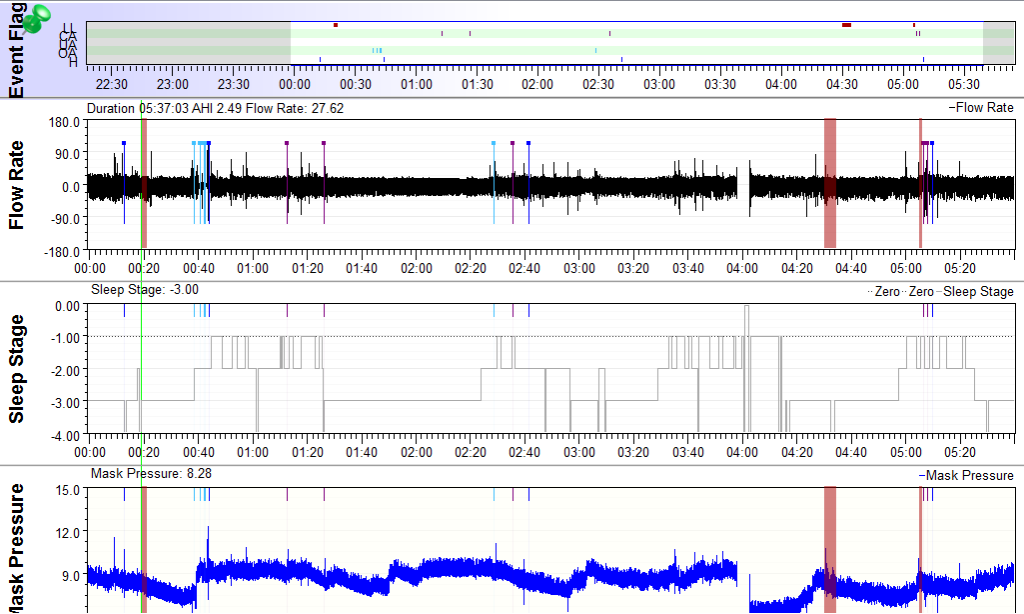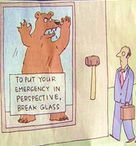Here are some additional screen plots thatwere ment for thesecond post. jay, I can not edsit your post, so I had to do anew one.
Before I talk about how the preferences in ZeoViewer change how the data is SleepyHead, I want to cover one other unique feature of the ZEO sleep monitor.
ZEO scores deep sleep in 2 separate stages. Deep sleep is scored as either stage 4 or stage 6. The Sleepyhead default scale does not show the Stage 6 sleep. In order to see this additional stage you need to change the Sleepyhead Y scale to a maximum of 6.
Default display

Scale changed to show stage 6

Now to the “Invert Data” preference.
The normal SleepyHead display shows the actual sleep score. As a result the Deep sleep (4 and 6) are the tallest and wake (1) is shortest. The ZEO displays and the new ZeoViewer adjust the scale so that Wake as tallest and deep as shortest.
When working on the new export, we were looking for a way to “invert” the data and to fool SleepyHead into displaying wake as tall and deep as short. The result is the “Invert the Data” preference. When this option is selected sleep scores are negated in the CSV. So on the output the stages have the following values:
Wake -1
REM -2
Light -3
Deep -4 and -6
Now Wake is tallest and deep(s) are shortest.
To see these negative values you change the Y scale. Enter -6 in the first section and 0 in the second. When I have done this, I sometimes have a hard time seeing the -6 data. WE have found that by making the range -8 to 0, the scale is acceptable and the data is very clear.

Background on “Trim Hypnogran”
When ZEO stores data it adds 0s to the front of the detailed sleep data to back it up to an even 5 minutes. For some reason ZEO can add anywhere from 8 to as much as 30 minutes to the front of the data. ZEO also added a LOT of 0s at the end, sometimes this was 1/3 as long as the real data. The original ZeoViewer exported both the leading and training 0s. When SleepyHead imported this data it had to compress the scale to show all of the data. But there was not any data for the last 1/3 of the display, it was all 0s.
The “Trim Hypogram” was created to remove these leading and trailing 0s. It looks like the latest software update removes the trailing 0s. One 0 may be left at the beginning it helps align the data block to the nearest whole minute.
WARNING WHEN LOOKING AT AN EVENT IN SLEEP STATE REMEMBER THAT THE "REAL WORLD EVENT" MAY HAVE STARTED IN THE LAST HALF OF THE PREVIOUS30 SECOND EPOCH OR LATE IN THE ONE CURRENT ONE. DO NOT TRY TO LOOK AT A BREATHING EVENT THAT IS TIMED TO THE .001 OF A SECOND AND SAY THAT HAPPENED JUST AS WENT INTO REM THAT IS A 30 SECOND WINDOW. In the example in the first post it appears to line up, but it can be off for the following reasons.
1) ZEO actually scores and records finer detailed timing, but it then averages the data within a 30 second window that they call an EPOCH, So a 30 second time is scored as REM, it is most of the data in the 30 second window was REM. The first 14 seconds could have been wake and the final 16 REM. But the whole 30 seconds is scored as REM.
2) The original CSV format only contained a start time to the minute. The time format did not include the seconds. The Sleepyhead viewer had to adapt to this limitation. So now not only is the data averaged over 3 0seconds, but we have to adjust it to start at a whole minute.
3) If you look at the TXT file output, you will see a start of night value that is to the second. But we cannot use that time because in the CSV file we can only give it to whole minute.
4) ZEO does not start recording sleep stages as soon as you put on the headband. It needs time to establish a connection through the sensor pads. It only starts collecting data when the “bar” to the “ZEB Indicator” (the head like thing) . You have no control over when this happens. It depends a lot on the state of your sensors. The better shape that they are in the less time it takes. The Start of Night in the TXT file is the time to the second that the first sleep stage is captured. Even if we had this, remember that ZEO averages the data within a 30 second window. So even if the data collection starts at 23:55:58 there is only 2 seconds worth of data to average for the 30 second epoch starting at 22:55:30 to 22:56:00. So there may not be enough data collected to be averaged until the 22:56:00 to 22:56:30 epoch. The result of all of this is that we only see a change in sleep stage at the whole minute or at 30 seconds…… nature never works this way….. You do not wait for the whole minute or 30 second interval to start REM.
5) Sync errors between different clocks. . I have tried to sync the time of both my ZEO and my CPAP to a clock radio controlled clock. It is good to within a second. Since neither ZEO nor the S9 display seconds, the closest you get it to wait for the minute to flip and see how close the clock is. This is made worse because the clock is not started until you exit the time set mode. It takes time to do this. I cannot get either of my machines better that machine better than within 2-3 seconds of my master clock. Most of the time I am lucky to get them within 15 seconds.
6) Clock drift: My cpap clock drifts badly. I have repaired and tinkered with a 200 year old grandfather clock. I have it keeping time within 3 seconds a week, when I have to rewind it. The CPAP is not even close. It is losing about a minute a week. So, even if it is write today, it is off tomorrow.
The effect of all of this is:
DO NOT TRUST THE EDGE OF THE EVENT AS THE ACTUAL TRANSITION.
1) Sleep Stage is averaged over a 30 second window
2) There is a difference between the clocks
(Almost done beating this dead horse)
So the best you can do:
The best you can do is to try and sync the clock on the CPAP and the clock on the ZEO to within a few seconds. In general the ZEO time is easier to change than the CPAP time. If you need to change your CPAP time, try to do it in the afternoon rather than in the evening. The machines seem to like it better. You will have more trouble backing up the clock on your CPAP than moving it forward. Backing up can cause duplicate data which the CPAP machines do not like.
SO REMEMBER THAT TRANSITION THAT LOOKS IT HAPPENED EXACTLY AT 23:50 MAY HAVE ACTUALLY STARTED IN THE LAST 14 SECONDS OF THE PREVIOUS EPOCH OR IN THE LAST 16 SECONDS OF THE EPOCH IT SHOWS UP IN….. AND THAT IS IF THE CLOCKS ARE THE SAME…. THEY NEVER ARE.
(Done beating the horse….. off my soap box, I think you get the idea by now, or you stopped reading my rant long ago)
Late Entry:
At least two people have had problems with Sleepyhead losing the sleep data when they exit and restart it. It looks like this happens when you add data additional data. The work around that has been suggested (and is still being verified) is pretty easy:
1) Before you start SleepyHead to into the profile you use and delete the folder named ZEO_XXXXXX. This is where the detailed data is stored. If the folder is not there ZEO will created a new one when you import the data.
2) In the ZeoViewer simply export all of the data. This is the default mode. So it is easier.
3) When you load the data into Sleepy head all of the data is loaded, and it is kept when you shut it down and start it up again.
